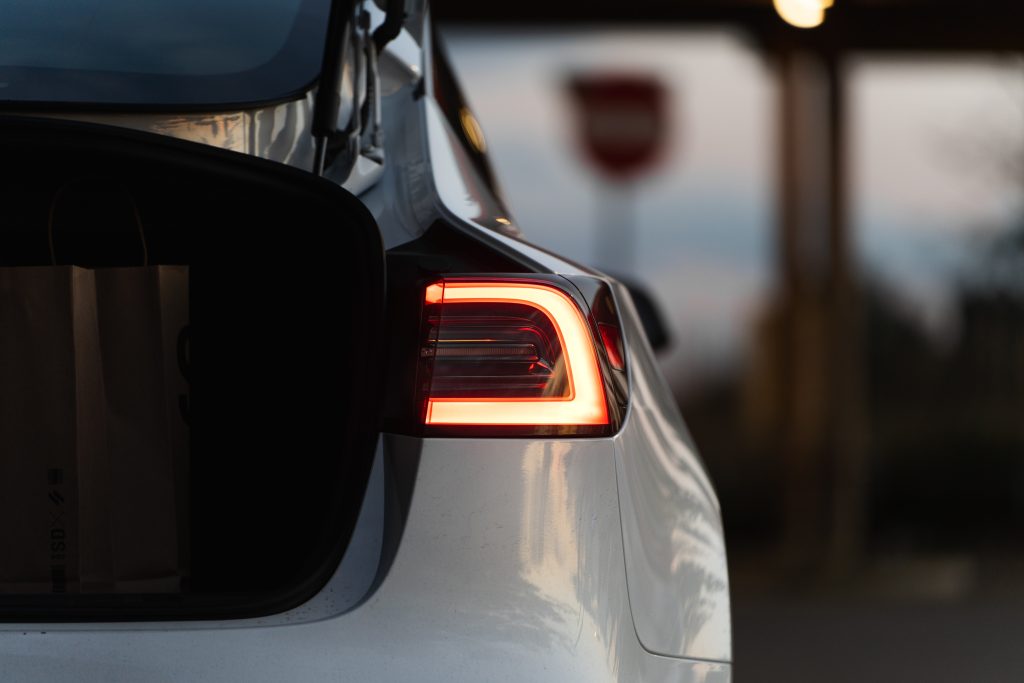By: Otaiba Ahsan

The first time I drove a Tesla, I was immediately curious as to why the car was slowing down to a stop as soon as my foot was eased off the accelerator. After a quick chat with the advisor from the Service Center, I came to learn that it was something called Regenerative Braking. How does Regenerative Braking work for Teslas? Continue reading for more.
What is Regenerative Braking?
Whenever your Tesla is moving and your foot is off the accelerator, Regenerative Braking slows down the vehicle and feeds any surplus power back to the battery. This is accomplished by anticipating your stops and reducing or removing pressure from the accelerator pedal to slow down. This poses three great benefits for Tesla owners over time.
First, the surplus power going back to the battery increases driving range which over the long haul can save you time and money from charging. The other benefit is that there is much less pressure on your brake pads compared to a gas-vehicle experience. This is because you’re not having to press them like it’s frequently required for the typical driving experience. As a result, it’s said that brake changes are not required as often for Teslas. Lastly, this allows you to experience one-pedal driving!
Your car’s deceleration due to Regenerative Braking may vary depending on the current state of the battery. For example, when it’s extremely cold or the batter is fully charged, the car typically won’t decelerate as much for various reasons. Tesla will give a notice on-screen when Regenerative Braking capability is reduced, and typically within 5-10 minutes of driving it goes back to normal.
NOTE: To experience the same amount of deceleration whenever you ease off or release the accelerator pedal, regardless of the state of the battery, you can choose to have the regular braking system automatically engage when Regenerative Braking is limited. When in your car, tap Controls > Pedals & Steering > Apply Brakes When Regenerative Braking is Limited. When this setting is engaged, the brake pedal may move, and it may feel stiffer when pressed manually. This is expected.
Power Meter for Regenerative Braking
As you drive, you may notice a thin horizontal line centered at the top of the touchscreen’s car status area. This is known as the Power Meter and it displays real-time power usage for your Tesla:
- The left side of the meter represents power generated from Regenerative Braking or power that is used to slow down the vehicle. Moreover, power being fed back to the battery displays in green, whereas power used by the regular braking system is shown in gray.
- The right side of the meter shows power being output by the battery, such as that used to accelerate the car or to cool the cabin. When you press down on the pedal, you’ll see that the power meter fills to the right with black, or white if the display is dark.
The next time you drive your Tesla, try and pay attention to the power meter, especially when using Regenerative Braking. It’ll give you a good idea of how much is being put back into the battery to help with range.
Other Important Notes on Regenerative Braking
If you install winter tires with aggressive compound and tread design, this may result in temporarily reduced regenerative braking power. However, all Teslas are designed to continuously recalibrate. Sometimes, the car requires some hard straight-line accelerations to help with the recalibration. Additionally, when in your Tesla tap Service > Wheel & Tire > Tires > Winter Tires and this will help quicken the process.
If Regenerative Braking is aggressively slowing down your Tesla, like when your foot is completely taken off the accelerator, then the brake lights will turn on to alert others that you’re slowing down.
TIP: If you pay close attention to the on-screen version of your Tesla, you’ll see that its brake lights come on whenever your vehicle brakes. This is a quick and useful way to know whether your brake lights are on as a result of Regenerative Braking.
The Bottom Line
How does Regenerative Braking work for Teslas? In short, Regenerative Braking slows down the vehicle and feeds any surplus power back to the battery. As a result, your driving range is increased, there’s less wear and tear on the brakes, and you’re able to have the luxury of one-pedal driving!
